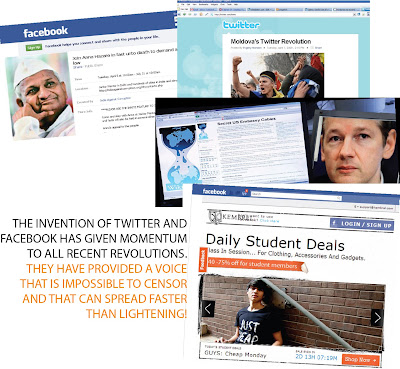THE POWER OF SOUND
“Of the 25 biggest product categories in the 1920s, 20 are still the brand leaders; and all were built on radio!”
Saigon, Vietnam 1965...
A secret US army base is readying for war...
But one man is going to keep the soldiers laughing...
And his radio show… Gooooood Morning Vietnam!
Back in India, Vidya Balan set Munna Bhai’s heart aflutter as she crooned, “Gooood Mooorning Mumbai” to her listeners on the radio. Panic was created on Halloween night in 1938. A radio adaptation of H.G. Wells’ fictitious story The War of the Worlds caused many people to believe that Martians were invading New Jersey. The listeners missed the opening credits and many were treated for shock hysteria and even heart attacks. Newspaper offices (and surprisingly not Police Stations) were swamped with frantic queries, “What is happening? Where’s the nearest bomb shelter? What must we do?” Yes, a lot can happen on the radio! In fact air waves are witnessing fervent activity in India and the world over. The radio industry in India is growing at 30%!
The second round of privatization happened in 2006 making sure that “Radio” started playing a merrier tune and the radio industry got a chance to finally make profits. Earlier, radio operators were expected to pay a huge license fee, which increased at 15% annually. Now, they would be expected to pay only a one-time license fee or entry fee; and then they are free to go about their business. All they have to pay annually after this is 4% of their gross revenues. This immediately helps them save on 50-60% of their operating costs.
The future looks bright. With this system in place, more players would be expected to enter, creating more excitement and more revenues for the industry. When there were only 4 to 5 TV channels, the ad spends were about Rs.500 crores. As the channels have increased to 100, the ad spend too has increased to Rs.4,800 crores! Post-liberalization, radio seems all set to rule. After all, the global phenomena has been “radio” and “out-of-home” advertising showing better growth and performance than newspapers or magazines. No wonder, a whole lot of new players are scrambling to grab a piece of the pie, while the old players are working out different strategies to keep the audiences stuck to their radio sets and their frequencies.
One playground, different strategies
“No horoscopes, no agony aunts, no silly jokes, only music” is how Virgin’s channel Fever plans to capture the Indian audience. Red FM tried to catch their attention with the help of a star-studded line up of anchors. Radio City thought of capturing the smaller towns where operating costs would be less and it would provide the unique opportunity to advertisers to tap into and talk to consumers in smaller B and C class markets. Reliance (ADAG) with its BIG 92.7 and 45 radio stations firmly believes that in this game, only the big will survive. It invested Rs.160 crores for the 45 stations. Immediate profits is not something that’s on its mind as it’s looking long term, as all it plans to do is hold on and build the market. Radio Mirchi, which is the market leader in both Delhi (¾th people listen to it) and Mumbai (50% listeners are tuned to it) seems to have its focus absolutely right. Its target is the 15-35-year-old crowd, and it has understood the pulse of this market. According to its Deputy CEO, Prashant Pandey, “Playing English music makes us lose 95% of the audience.” So, everybody is working out a different strategy to outdo each other.
The power of sound
According to the Indian Listenership Track (ILT), Radio Mirchi was the clear leader (in 2006) in Delhi, Mumbai and Kolkata. While Radio City, Red FM, Radio One, Big FM and Fever are fighting it out, there seems to be a new category emerging, which could very well defeat this whole category of traditional radio. The latest shift is towards ‘Satellite Radio’, which is giving traditional radio stiff competition. Very simply put, it’s nothing but subscription radio with almost no commercials, but with high clarity of sound. The three major players are Sirius, XM Radio and World Space. Free radio, or commercial radio, seems to come with its “baggage” of limited playlists, annoying commercials and general lack of choice. Satellite radio, on the other hand, gives you dozens and dozens of commercial free music channels, information and entertainment in exactly the format you want.
Technology seems to be turning radio upside down! Not just from satellite radio, traditional radio is facing competition from Podcasting too. DJs play their favourite music on the internet and their loyal followers download it on their iPods and listen to it whenever they want to. This is a group of music lovers who want to listen to music of their choice – not someone else’s playlists – and that too without any interceptions from silly commercials or jokes. Of course, this business is yet to take off; but consider this – it requires no licenses, no frequencies, no towers.
Just ordinary people creating programmes and gathering thousands of loyal listeners. Podcasters could just as well be bypassing an entire industry and creating a revolution.
If podcasting is for now just a potential threat, satellite radio is already demanding its pound of flesh and making life miserable for traditional radio.
A new dimension
“If you talk to a man in a language he understands, that goes to his head. If you talk to him in ‘his’ language, that goes to his heart,” said Nelson Mandela; and that seems to be the magic of community radios, often referred to as ‘private radios’. They normally have a limited broadcast area and focus on a specific community. The Miner’s Radio in Bolivia is a very popular community radio. In India too, a small village in Karnataka used the community radio to pressurize the government to repair their public water pipes.
After three years of suffering drought, a young man recorded all the complaints of the villagers and aired it on the community radio. Within days, the pipelines were repaired and water came gushing into the village. Stalin K of Gujarat runs a revolutionary radio programme exposing the corruption in western Gujarat. Radio raids, where a whole team of reporters focuses on one particular issue, seems to be the most powerful weapon of community radios. The best part is, the programmes can be tailored to suit the needs of the community making it very effective.
Come to think of it, in spite of so much technological development, the good old radios seem to be the cheapest mode of information dissemination; and community radio is today paying a vital role in the development of communities and cultures. Jadavpur University’s community radio is all set to give the six commercial stations of Kolkata a stiff competition with its unique and customized contents. After Annamali University, IIT-Kanpur too is ready to flag off its community radio.
For those who felt that mainstream radio had no time for micro details and felt ignored, in came community radio to fill the void – Radio Idli – Mumbai’s first community web radio used air waves to showcase the talent of the Saraswat community.
So while traditional radio seems to be feeling the heat, let’s not underestimate its power. In the words of uber-marketer Jack Trout, “Of the 25 biggest product categories that existed in 1920, 20 are still the brand leaders. In other words, America’s leading brands were built on radio totally!” Tibetan Buddhists believe sound has the power to heal, to create new life. After all, every sound ever made echoes still, for sound waves never entirely disappear. According to Hindu mythology, everything started with the divine sound of “OM”...Let’s not forget the power of sound!


Comments
Post a Comment